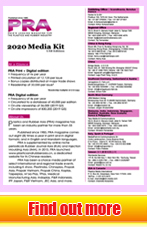PRA Chinese
Rubber Journal Asia Injection Moulding Asia Energy, Oil & Gas Asia
VISIT OUR OTHER SITES:
PRA Chinese
Rubber Journal Asia
Injection Moulding Asia
Energy, Oil & Gas Asia
Packaging Sector: Approaches to sustainable packaging
Innovative packaging can help counter the rising waste from packaging solutions, especially when recycling is just not enough, says Angelica Buan in this article.
Recycling, just not enough
The world had better take heed. By 2050, global waste is likely to heap up by 70%, according to a World Bank report, not unless drastic mitigating measures are taken. The grim forecast has tailpieces of advice, including good waste management systems that behove a circular economy.
For a long time, recycling has been in the main frame of waste management and sustainability. However, a few environmental groups have maintained that recycling is not enough and they may be right. Latest data reveals that the global recycling rate stands at a measly 9%, while the remaining greater bulk of the waste pollutes the landfills, dumpsites, or oceans.
Globally, while recycling rates vary among countries, a recent report indicated the recycling rates of top recycling countries average around 50%. In the European Environmental Bureau (EEB) Eunomia report (Issue 2), Recycling – who really leads the world?, countries like Germany, Wales, and Singapore had recycled more than 60% of their generated municipal solid wastes (MSW) and this rate was forecast to increase to meet their respective recycling rate targets. Meanwhile, South Korea, Taiwan, the Netherlands, Austria, Slovenia, Belgium, Switzerland and Italy recycled nearly half their litter. The rest of the world recycled even less.
The Global Alliance for Incinerator Alternatives (GAIA), a worldwide alliance of more than 800 grassroots groups, non-governmental organisations, and individuals in over 90 countries, and together with Zero Waste Europe and other global core partners, carried out an extensive research on plastic recycling, including the impact of the China’s ban on imported garbage. The study, published in 2018, concludes that “the only real way to solve the world’s plastic pollution crisis is to simply make less plastic.”

In a nutshell, the study pointed out to the use or lighter weight plastic or a combination of materials, colours and additives that are hard to recycle or not recyclable at all as factors impeding recycling.
The study also highlighted the maximum recycling level of even the best available recycling technology, which approximates between 36% to 54% for the current mix of plastic used, and the overall increase in plastic production, which outpaces a possible recycling rate of 53% by 2050, as among the reasons that undermine recycling.
Food packaging designed to be more recyclable
The market growth for easy-to-eat food and snacks, which was valued at US$37 billion in 2018 and subsequently envisaged to grow a CAGR of 5.5% through 2025, as gauged in a Market Research Future report, is also driving the consumption of food packaging – and the accumulation of waste packaging. Manufacturers are thus increasing focus on producing and using recyclable packaging to make recycling easier and recycling efforts more effective.
UK-headquartered Innovia Films, a manufacturer of biaxially-oriented polypropylene (BOPP) films, and German snack manufacturer Wildcorn have produced a fully recyclable and sustainable pack for their Wildcorn organic popcorn range. For the pack, a lamination of Propafilm Strata and a white OPP was used.
The joint project to establish a new sustainable packaging standard followed the launch of Innovia’s Propafilm Strata high barrier film, which obtained the ‘Made for Recycling’ logo from Interseroh, an Independent German recycling and consulting company.
(PRA)
Subscribe to Get the Latest Updates from PRA Please click here
©2020 Plastics and Rubber Asia. All rights reserved.

©2020 Plastics and Rubber Asia. All rights reserved.
Home Terms & Conditions Privacy Policy Webmail Site Map About Us












































































